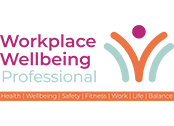In today’s rapidly evolving work environment, technological advances have arrived to enhance Health, Safety and Environment (HSE) training. Companies such as Amazon, Pfizer, UNOPS, and Henkel are already saving thousands of pounds in costs, training time, and travel expenses thanks to Virtual Reality (VR) training.
In addition to realistic simulations such as CPR, First Aid, or Waste Management, the possibilities are constantly expanding. Now, it’s even possible to simulate a virtual fire in any real location, allowing employees to train in fire extinction within their own actual workplace.
Mixed Reality Fire Training: Simulate Virtual Fires in Any Real Workplace
Ludus, the European leading platform for HSE training with VR, is introducing a state-of-the-art simulation that brings virtual fire-extinguisher training into real workplaces — offices, warehouses, factory floors — using mixed reality (MR). The system allows companies to simulate different types of extinguishers and virtual fires in the very environment where employees work.
What sets this apart:
- The user can train in situ — in their actual workplace, not in a generic training room: trainers and workers no longer need to travel to specific locations to deliver training.
- Different extinguisher types can be integrated, and virtual accidents can be triggered to enhance realism, awareness and relevance.
- Because it uses MR rather than full VR, the trainee remains in the real-world environment (with real physical movement and surroundings) but sees fire and hazards overlaid. This helps reduce the “barrier” some learners feel when entering a fully virtual world.
- Real-time feedback, trainer oversight and live collaboration are possible—trainers and peers can observe, guide and intervene even as the user faces the virtual fire.
The benefit is clear: when you train in your own workspace with your own equipment (even if the fire itself is virtual), you get heightened realism, stronger emotional engagement and more effective learning. The leap from theory to practice shrinks.
Every month, more than 1,600 virtual fire extinguishers are discharged on trainings with the Ludus platform, resulting in over £40,000 in monthly savings for its clients. However, these savings and benefits come from using just one of the 21 simulations included in the Ludus catalogue.
A Broad Virtual Reality HSE Training Catalogue
Ludus has developed a comprehensive VR platform covering a wide range of 21 HSE training contents. CPR, fire-extinguishing, first aid, waste-management, hand-safety, electrical risks, plant hazards, fall protection, construction-site safety and more.
Highlights include:
- Stand-alone VR headsets for wireless deployment — enabling training “anytime, anywhere”.
- Robust data and analytics capabilities: the platform captures performance metrics, identifies knowledge gaps or behavioural patterns, and enables continuous improvement of safety training: identifying common mistakes helps anticipate potential likely accidents before they happen.
- Standardisation, scalability and multilingual content and support (designed for global or multi-site operations): simulations and platform available in 14 languages.

Importantly, organisations gain full and unlimited access to this simulation catalogue — meaning once the platform is in place, you’re not limited to one module, one scenario or one site. Your workforce can access multiple simulations, refresh training frequently, cross-train in different hazards, and thereby build a broader, deeper culture of safety.
Why Immersive Training Is a Game-Changer for Health & Safety
Why are companies increasingly investing in VR/MR safety training rather than sticking with traditional methods? Here are some key advantages:
1. Immersion and engagement
Immersive simulations create an experience rather than just a lesson. When learners are placed “in” the scenario—especially when the scenario is tied to their actual environment—they are more engaged and more likely to retain what they learn.
2. Savings for companies
Training with immersive technology in any facility translates into multiple cost reductions. Savings on staff, trainers, or equipment transfers, shorter training times thanks to the higher impact of VR-based sessions… Not to mention additional savings such as extinguisher refills or the rental of facilities and equipment for training purposes.
3. Safe exposure to high-risk scenarios
VR/MR allows employees to experience realistic emergencies without real danger — whether it’s a fire, a heart attack, a chemical spill, a fall hazard or complex equipment malfunction. This safe exposure builds competence and confidence.
4. Better knowledge-transfer and behaviour change
The more realistic the training environment, the better the transfer of learning into real behaviour. Training in the actual workplace, or using high-fidelity simulations, strengthens the bridge between “knowing what to do” and “actually doing it when needed”.
5. Scalability and consistency
For businesses operating across sites, regions and languages, VR platforms enable consistent delivery of training content — no matter where your teams are. The catalogue approach means you don’t have to reinvent training each time; you can deploy, track and measure globally.
In a world where safety risks are evolving and employees demand meaningful, effective training, immersive technologies like VR and MR offer a powerful solution.
With its new mixed-reality fire-extinguisher simulation and a comprehensive HSE catalogue, Ludus is redefining how organisations build safer, more aware workplaces.
If you want to obtain more information about Ludus’ solution or watch a video about their new Fire extinguisher product, you can do it in the following link:
Watch the video and learn more
Mikel Cearsolo
Mikel is an Industrial Engineer from the University of Deusto and Co-Founder & CEO of Ludus Global, an award-winning company using immersive technology to transform health and safety training.
With over a decade of experience in innovation and business development, he has led Ludus’ growth from a local start-up to an international platform used by more than 300 organisations across 17 countries — including Amazon, BMW, Siemens and the United Nations.
Passionate about the intersection between technology, learning and culture, Mikel works with global HSE and L&D leaders to create safer, more engaging workplaces.
When not travelling for work, he enjoys nature, design, and exploring how technology can make learning more human.



